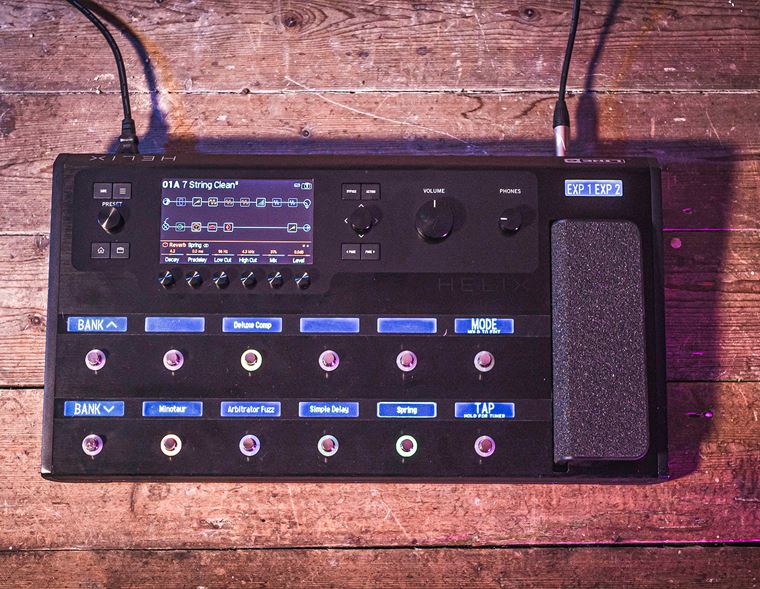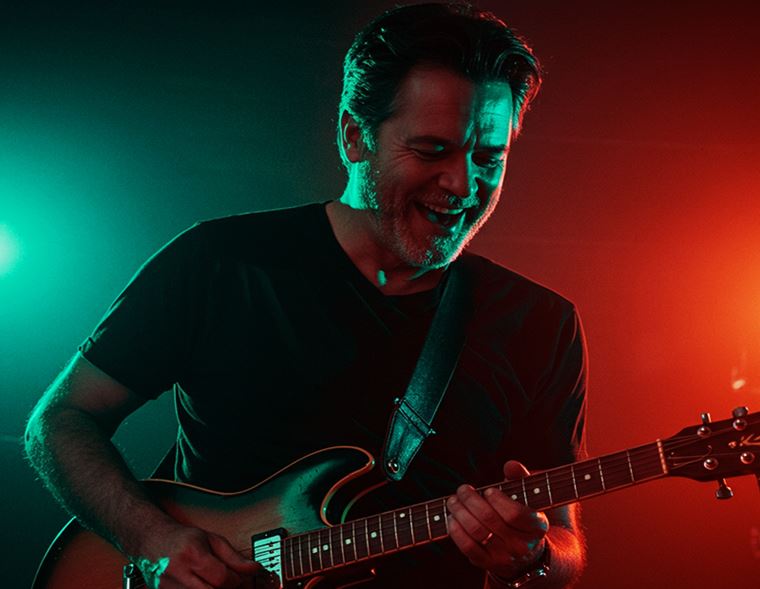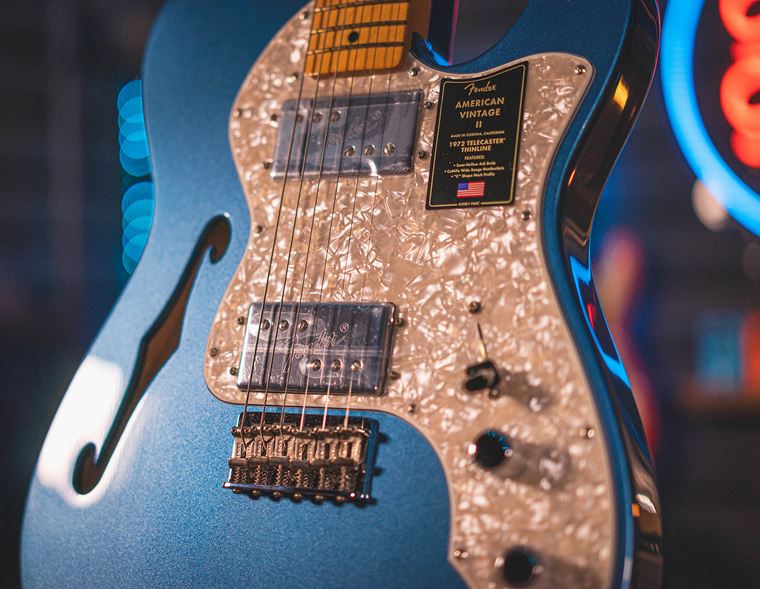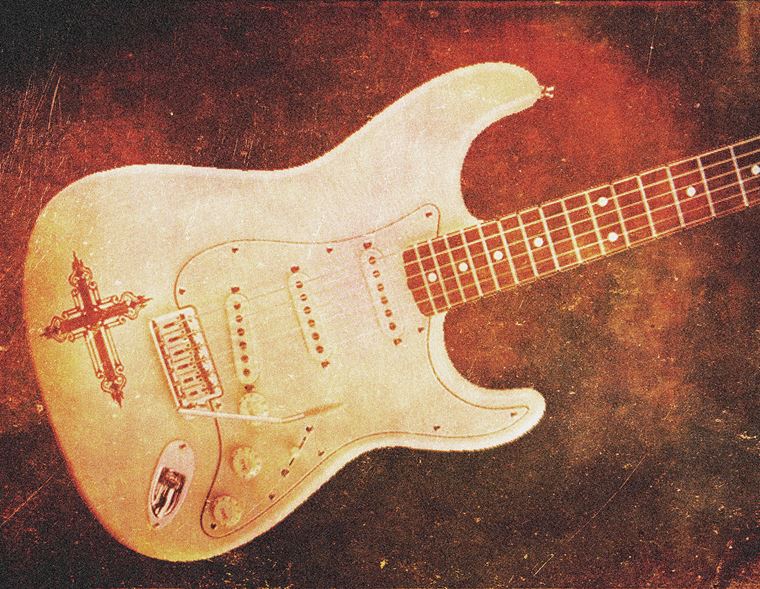Our Expert Guide to Fender Amps: 7 Best Fender Amps
The story of Fender is one synonymous with Strats, Teles, P-Basses and rock ‘n’ roll itself. But that’s only half of the story: Fender are easily the most significant amplifier makers in the world too. Today, I’ll take you on a brief journey through Fender amps: their inception, their significant models, and how things are looking in 2024, amp-wise, for Fender.

Many of us guitarists obsess over our guitars or basses but stop short of applying the same passion to our amps. In truth, the amplifier is the more significant element in terms of your final sound, so it pays to have experience and opinions on them. As a guitarguitar staff member of many years, I’ve been lucky enough to plug into an enormous amount of amplifiers, from the humblest practice combos to the most boutique, hand-wired masterpieces. This experience gives me a level of perspective that will hopefully mean that you can trust my thoughts and insights here!
Today, I’m focussing on Fender’s offerings into the amp world, and the reason why I’m sticking to them will be made clear right about….now!
Contents
Blackface, Brownface and Silverface
In the Beginning
Fender are the amp brand that all subsequent makes, models and styles have evolved from. They are the zero point, the genesis, the Big Bang. Before Fender amps, nothing much existed (not exactly true but we’ll get to that) and after them, we had it all: volume, tone, distortion, rock music, and to a certain degree, modern culture as a whole.
Too much? Well, not really.
Back in the 1920s, when Big Band and Jazz were the predominant styles, guitarists tried to keep up with ever-increasing volume levels by using rudimentary pickups attached to their hollow body guitars. They’d plug them into the closest thing they had to amps, which were radio-style speakers that sounded poor and had very low outputs.
The 30s brought bigger ‘cone’ speakers, as we know them today, but most guitarists had to make do with portable PA systems which were off-puttingly heavy.
Things changed in 1928, when the quite mysterious Stromberg-Voisinet company released what we can probably say was the first ‘combo’ amp: a wooden cabinet that contained both the amplifier circuit and a speaker. Other companies quickly jumped onboard, offering amps for banjo and guitar players with similar designs. We’re talking about Stromberg-Electro, Vivi-Tone and even Rickenbacker here, all built in the 1930s.
Even still, these devices were still thought of more as portable PA systems. The 1930s heralded rectifier tube technology and smaller power supplies, all of which brought what we know of today as a ‘guitar amp’ into slightly clearer focus. Steel guitarists were the first to hear their amplified playing immortalised on recordings, but significant things really started to happen in 1945 with a little company called…K&F?
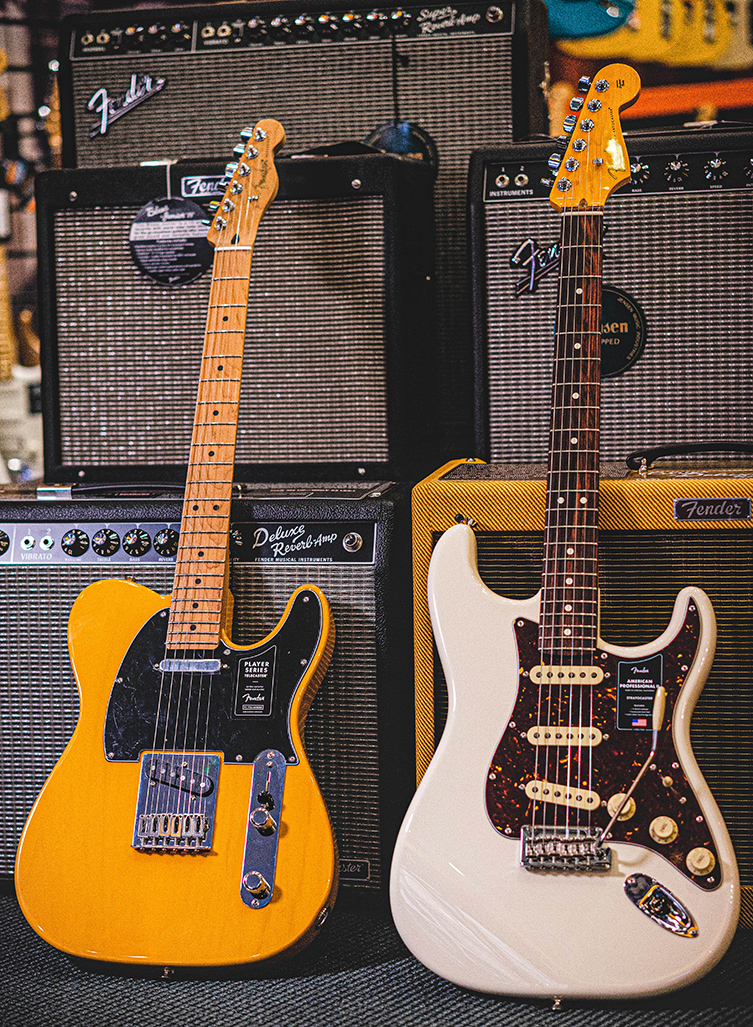
K&F into Early Fender
Before Fender were Fender, they were K&F. Leo Fender’s business partner was Doc Kauffman, and they made a series of amps with steel housings that were small (8” to 15” for the speaker sizes) and finished in a strange grey ‘crinkle’ that was created by baking the amps in Kauffman’s oven. Do not try that at home.
Anyway, a couple of years later, we start seeing names that are very familiar: Princeton, Deluxe and Professional. We are now in the realm of the Fender Electric Instrument Company, and this is where the seismic shifts start rippling out into the universe.
These first amps were noticeably bigger than the baked K&F efforts, and were made with wooden enclosures, small speakers and either very little or no controls! These lasted until 1948, when the Tweed phase came about!

Fender Tweed
So, first off: it obviously isn’t actual tweed that’s used on these amps, but it is a tough cotton twill that’s put around the enclosure and then varnished. The amps that received this Tweed covering are what we all think of as the original Fender combos: this period gave us the following amps:
- Fender Bandmaster
- Fender Bassman - Inspiration for Marshall and many others
- Fender Champ
- Fender Harvard
- Fender Princeton
- Fender Pro
- Fender Deluxe - the most recorded amplifier in existence, according to many
- Fender Twin - one of the most famous amps in history
- Fender Tremolux
- Fender Vibrolux
It’s practically a who’s-who of classic Fender amps, right there! This era lasted from 1948-60 and you’ll certainly have some familiarity with a few of these models.
The Bassman is the significant one in my book. Why? Well, although it was designed as a bass amp (hence the name), guitarists quickly learned how excellent it sounded with their brand new Broadcasters/Telecasters, and so the Bassman became a popular guitar amp. It’s also the model used as a blueprint by a certain Jim Marshall over in Milton Keynes for his own experimentation. He was trying to copy the Bassman, and in failing, delivered something just as important: the world’s first Marshall guitar amp!
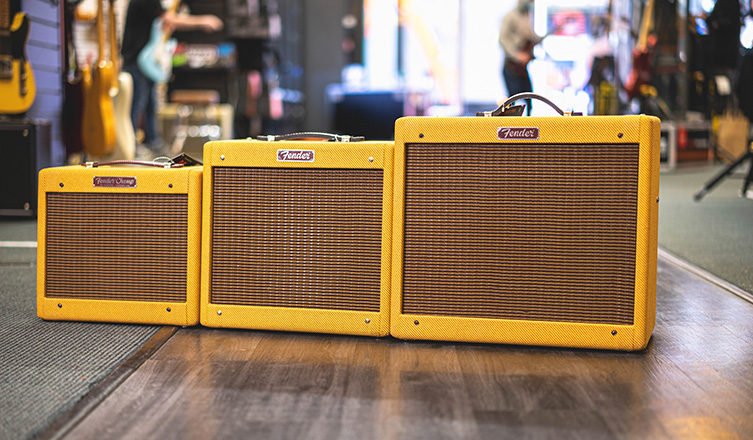
The Fender Twin got its name simply due to having two 12” speakers built into its bigger chassis. As ever, players wanted more volume (nothing changes) and this was Leo’s response. The Twin remains one of the company’s most well-used amplifiers, delivering ‘that’ Fender clean tone in buckets, with terrifying amounts of clean volume along with it.
Blackface, Brownface and Silverface
Blackface, Brownface, Silverface. These are, unfortunately, well-used nicknames for different periods in Fender’s amp history. They refer directly to the colour of the amp’s control panel, so it is a literal thing, no matter how dodgy those names can seem out of context.
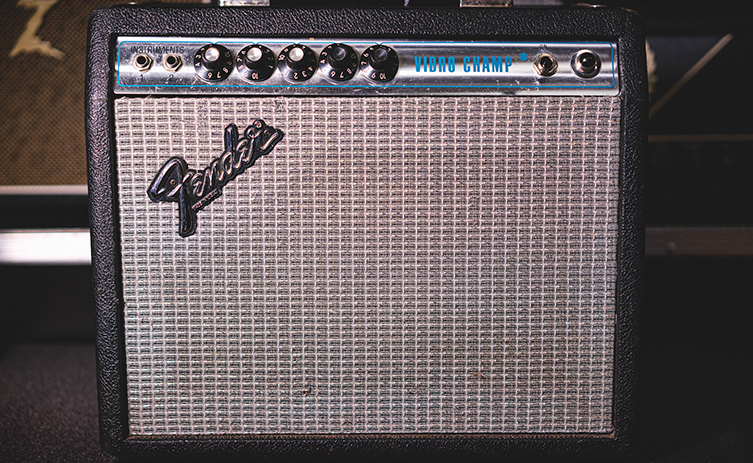
Here is how they roughly line up in terms of chronology:
- Tweed: 1948 - 1960 Yellow tweed with red/brown speaker grill cloth.
- Brownface: 1959 - 1963 (lots of these were changed back to ‘Blonde Tweed’) Brown control panel with blonde Tolex (waterproof vinyl) on the cabinets.
- Blackface: 1963 - 1968 Black control panel, black Tolex cover, silver speaker grille.
- Silverface: 1967 - 1981 Brushed aluminium ‘silver’ front panel (most often with blue labelling), black Tolex and silver/grey speaker grille.
Each of these eras had their own idiosyncrasies, but all eras kept most of the famous models in production, so you’ll see, for example, a Fender Twin as a Blackface, a Brownface and a Silverface throughout the decades.

Tube Power
Relative to all classic Fender amps is of course the use of vacuum tubes, or valves as we call them in the UK. As part of an amp’s overall circuit, valves are used in both the preamp part of the amp - where the sound is essentially created - and in the poweramp section, where the sound is given shape and volume before going out through the speaker.
One important part of this is that there are different types of tube available for amp designers, particularly in the poweramp section. Different tubes actually make the amp not only sound different, but react differently to one’s playing, and to different volume settings. The Fender Twin that I mentioned a second ago is able to be so loud and so clean sounding (we call this ‘lots of headroom’ because the sound isn’t squished or compressed) because it uses 6L6 power tubes. These can handle tons of power. The 6L6 is thought of as being extremely important in achieving the ‘Fender tone’: as a comparison, most classic Marshall amps use EL34 power amp valves, which add that characteristic distortion sound.

Digital Amps
Today, Fender offer a huge variety of amplifiers, from reissues of those classic amps we’ve just explored to digital modelling versions of them and more. Digital modelling is a type of technology where the sound of a given amplifier model is virtually recreated via cutting edge digital technology. The amplifiers that use this tech tend to offer large amounts of amp models all inside the one amp, together with built-in effects and other features.
The Fender Mustang GTX range is a perfect example of this type of amp. You can choose from a range of amp models (not just Fender amp models, I’d hasten to add) and so enjoy a room full of amp sounds through just one lightweight digital amp. There are no valves - it’s all done via a digital CPU - and you can ‘simulate’ loud volume without actually requiring loud volume. For home use and recording, digital modelling amps can be very rewarding.

Fender Tone Master
In recent years, Fender have grown bolder than ever and decided to ‘clone’ their own classic valve amps such as the Deluxe Reverb and the Twin Reverb as completely digital amps. Instead of offering loads of sounds like you’d find on a Mustang GTX, each Tone Master amp simulates one amplifier exactly, from its sound to its look. It’s the same sound and has the same controls, but everything is digital. A Tone Master Twin Reverb is a good bit cheaper than an all-valve Twin Reverb, and weighs considerably less.
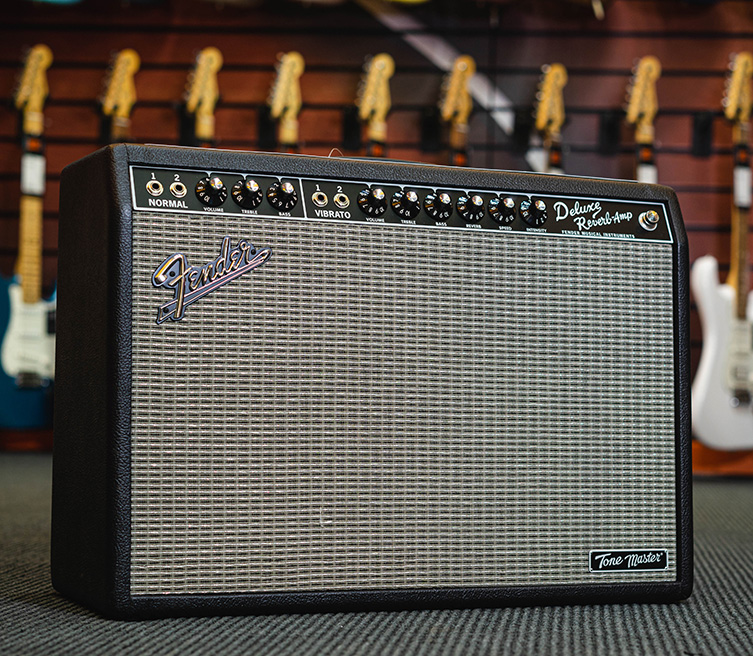
Sceptical? So was I, until I tried a couple! I think you’ll be pleasantly surprised when you do the same. I remained impressed, and feel like these are possible game changers for amp fans who understand the drawbacks of ‘the real deal’ in a realistic gigging world. Try them out and let me know!
Fender Tone Master Pro
That brings me to today, now, in May 2024. A few months ago, Fender added to their Tone Master line with their first modelling floor unit, the Tone Master Pro. It’s designed to compete with the Helixes, Kempers and Quad Cortexes of the world, and it’s a powerful piece of kit indeed!

The whole landscape of guitar tone has changed in the last 10-12 years. Digital modelling technology has now long-since been accepted as being as high quality in sound as ‘the real thing’. Guitarists can now realistically show up to a gig with one guitar, one floor-based digital modelling unit and a couple of cables, and be able to deliver authentically, objectively great tone all night long.
I think it’s worth noting that these devices don’t invent anything: there needs to be existing amplifiers out there in the world that people love the sound of, or the modellers would have nothing to model!
That brings me back to the Fender Tone Master Pro. This unit - being made by Fender - has all of those Tone Master amp models like the Twin and the Deluxe, alongside a host of other classics outside the Fender brand. The point is, it’s official Fender stuff, and it’s bang on the money, too. It’s also the only modeller with an official model of the prized EVH 5150 sound, which for a great deal of us is the ultimate high gain rock & metal amp sound.
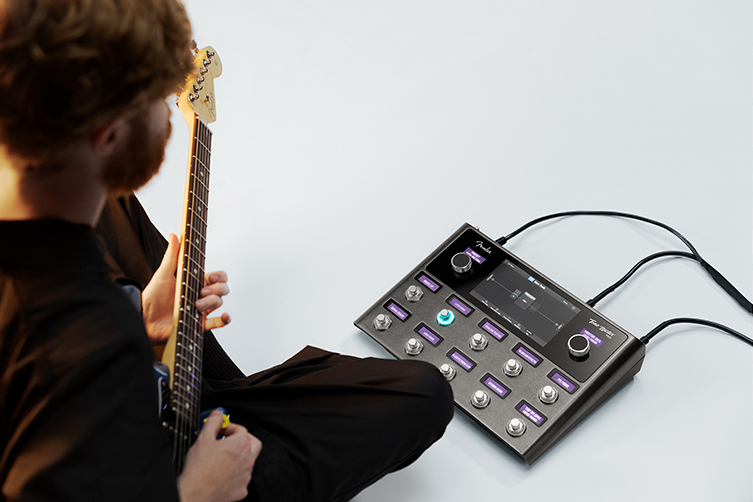
All of that at your feet, in infinite combinations? Along with loads of effects? AND it’s easy to use? What else do you need?
The Best Fender Amps
So what are the best Fender amps? Well, that all depends on your needs, but here’s a rundown of some excellent amps and who might best benefit from them…
- Best digital modelling amp for home: Fender Mustang GTX50
- Best Affordable valve amp for gigging: Fender Blues Junior IV
- Best choice for tone and weight: Fender Tone Master Twin Reverb
- Best classic Fender amp: Fender 68 Custom Twin Reverb
- Best Classic Fender amp that’s not as loud: Fender 65 Deluxe Reverb
- Best digital choice for professional use: Fender Tone Master Pro
- Best Fender vintage Tweed combo: Fender 57 Custom Deluxe
Iconic Fender
Here at guitarguitar, we sing Fender’s praises often. I’d say that’s pretty justified in general terms, and especially so when we all consider how much they’ve given us through their amplifiers.
Fender will forever be the iconic brand who brought the world the Strat and the Tele. That’s their crowning glory, but the fact is, NO guitar music would sound how it has done for 70 years, were it not for Fender amps. There’d be no Marshall, no MESA/Boogie and no rock n roll. Just think about that! From the dawn of rock to today’s digital revolution, Fender amps have been front and centre.
Click to View our Fender Amplifiers




